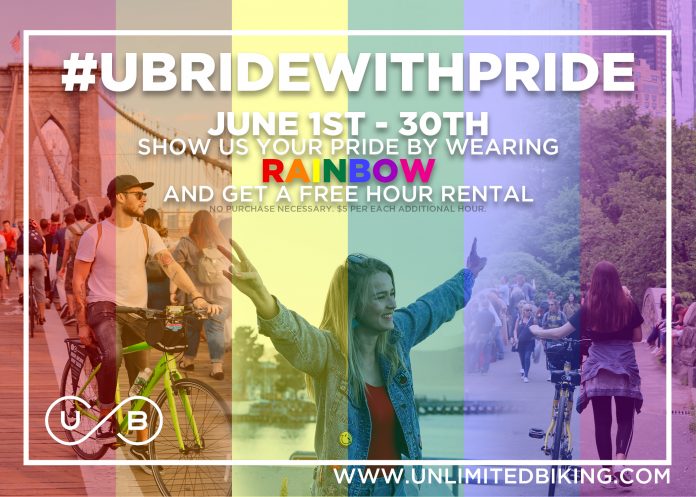The Village may be the first area that comes to mind when you think of LGBTQ+ culture in NYC, but Central Park has also played a significant role in the city’s LGBTQ+’s history. In fact, in the 1970s, the first Gay Pride marches then called the Christopher Street Liberation Day March, ended it’s annual celebration at the Park’s Sheep Meadow. But that’s not where Central Park’s connection with the gay community ends. Hop on a bike and venture further into Central Park with us as we explore the following notable LGBTQ+-related sites.
Bethesda Fountain
Bethesda Fountain, made iconic by the graceful sculpture of an angel that resides high above the water, is one of the Park’s most known sites. However, it isn’t as widely known that Emma Stebbins, the fountain’s sculptor, modeled the angel after her lover Charlotte Saunders Cushman. Cushman herself is noteworthy, not only for being an artist’s muse, but also for her career as a stage actress. During her time she was known for giving masterful performances in both men’s and women’s roles and she even gained the admiration of President Abraham Lincoln.
Hans Christian Andersen Monument
A further north into the Park, nestled in the shrubs next to a large pond where children sail model boats, you’ll find a bronze statue of the beloved Danish storyteller Hans Christian Andersen. Andersen, the creator of so many popular, but tragic, fairy tales, had an equally tragic love life, with many of his infatuations with women and men going unrequited. Although Andersen’s letters and diaries suggest that he was bisexual, the author remained celibate throughout his life. Some sources like to point to Andersen’s tale of The Little Mermaid as a reflection of the disappointments in his love life. Like how the mermaid was unable to be with her land-bound prince in Andersen’s original tale, neither was Andersen able to be with the people he fell in love with.
Now venture further into the city with us to discover more NYC sites that have made LGBTQ+ history. Keep in mind that this isn’t your usual sightseeing list: While Stonewall Bar and the gay-friendly neighborhoods of Chelsea and Hell’s Kitchen are important to NYC LGBTQ+ history and culture, today we’re going to ride down a less explored path and discover a few surprising LGBTQ+ cultural sites in New York City.
Julius’ Bar
No LGBTQ+ landmark list would be complete without mentioning Stonewall Inn, which is celebrating the 50th anniversary of its famed uprising this year. But did you know that merely a block away from Stonewall sits the New York City’s oldest gay bar? Established in 1867, this bar is called Julius’, but it wasn’t always a LGBTQ+ friendly place. For decades gay patrons of Julius’ faced harassment and expulsion from the bar by the bartenders, who refused to let gay enjoy their drinks in peace. This changed in 1966 when three members of the Mattachine Society, one of the country’s oldest gay rights organizations, staged a ‘Sip-In’ at Julius’. The men sued the bar for denying them service on the grounds that they had the right to peaceably assemble in bars. Their victory in court led to the legalization of gay bars.
Christopher Street Pier
A quick bike ride away from Julius’ is a set of piers on the Hudson River waterfront collectively called the Christopher Street Pier. Since the 1940s, the Christopher Street Pier, also referred to as Gay Pier, has been an important part of the LGBTQ+ social scene, especially for young gay black and Latino men. Aside from still being a popular meetup spot, today the pier also features a memorial to the people who lost their lives in the 2016 Orlando nightclub shooting.
Carnegie Hall’s Studio Towers
From 1897 until 2010, the Studio Towers apartments on top of Carnegie Hall were home to some of the most talented LGBTQ+ artists in the city. Over the years Studio Towers residents included actor Marlon Brando, photographer Bill Cunningham, dancer Isadora Duncan, and composers Leonard Bernstein and Don Shirley. According to the NYC LGBT Historic Site Project, Bernstein and Shirley were the only residents to perform solo concerts at Carnegie Hall during their careers. Unfortunately, the days of living above Carnegie Hall are no more, as the Studio Towers were converted into classroom and rehearsal space. But as you stop by Carnegie Hall, look up and make a guess at how much these artists must have paid in rent.
The Plaza Hotel
The Plaza Hotel may be the most surprising inclusion on this list of NYC LGBTQ+ cultural landmarks, but the famous upscale hotel has been a quiet friend to the gay community since the early twentieth century. The Plaza’s Oak Room served as a discreet meeting place for well-to-do gay businessmen who wanted to avoid the risk of being arrested during the raids that commonly occurred at other bars with gay patrons around the city. In addition to this, in 1966 the Plaza also was the venue of openly gay writer Truman Capote’s legendary Black and White Ball, which was described as the “pinnacle of New York’s social history.” The Plaza Hotel made recent history again when it hosted the first gay wedding in New York in 2013.
Want to visit these sites as well as the other LGBTQ+ NYC landmarks we’ve mentioned?



